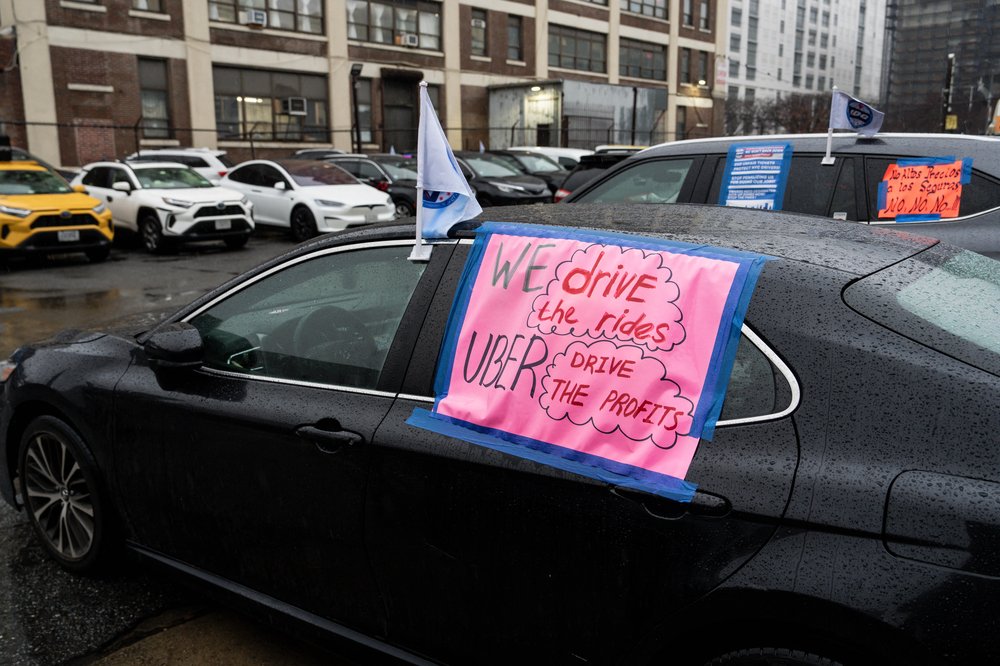NYC bans Uber and Lyft from randomly barring drivers from working
June 26, 2025, 1:52 p.m.
Since the city first imposed a minimum wage for Uber and Lyft drivers in 2019, workers have said the companies randomly kick them off the apps as a way to get around the pay requirements.

New York City Uber and Lyft drivers will get a pay bump and new work protections under rules passed by the city Taxi and Limousine Commission Wednesday.
A tweak to the formula used to calculate driver minimum wage — a complicated algorithm based on the time and distance drivers spend with a rider in tow — amounts to a 5% increase in driver pay, according to the TLC. But for many of the city’s 81,000 app-based drivers, new regulations that limit when the tech companies can lock them out of the platforms are more important.
Since the city first imposed a minimum wage for Uber and Lyft drivers in 2019, workers have said the companies randomly kick them off the apps as a way to get around the pay requirements.
“ They've used lockouts to game the rules so they could get away with paying drivers less,” said New York Taxi Workers Alliance Executive Director Bhairavi Desai. “And they've used the threat of lockouts to mobilize drivers against their own interests and persuade and panic drivers into calling on the TLC to deregulate these payment standards.”
Desai said Uber and Lyft increased its use of the lockouts last year, sometimes kicking drivers off their platforms mid-trip. The companies have claimed the structure of the minimum wage rules forces them kick drivers off the apps.
The reforms passed on Wednesday require the apps to give 72 hours notice to drivers before locking them out, and ban the companies from imposing a lockout longer than 16 hours.
In exchange, the TLC gave the app companies more favorable terms on the minimum wage calculation. Instead of basing the wage on how long a trip lasts, it will also take the trip's distance into account.
Uber spokesperson Josh Gold said in a statement that the previous rules for calculating driver pay created “perverse incentives, stifled innovation, and led to a frustrating, unpredictable experience for drivers.”
“While these changes are a step in the right direction, we still have concerns that the underlying pay formula will still deprive drivers of earning opportunities, drive up prices for riders, and reduce ride availability, which isn't good for anyone — especially the drivers who depend on steady demand to make a living,” said Lyft spokesperson CJ Macklin.
Still, many drivers argue they should get a larger share of the fares collected by the tech companies.
“Customers will oftentimes ask, ‘Why am I being charged so much?’ And the customer believes that the fare that they’re paying, 100% will go to the driver,” Carmen Cruz, who drives for both Uber and Lyft, said in Spanish. “When in reality, this is not the case. Sometimes we’re making as little as 50% or even 45% of what the customers are paying.”
The TLC’s new rules will take effect on Aug. 1.
Want an exemption from NYC congestion pricing tolls? Drive an Uber.